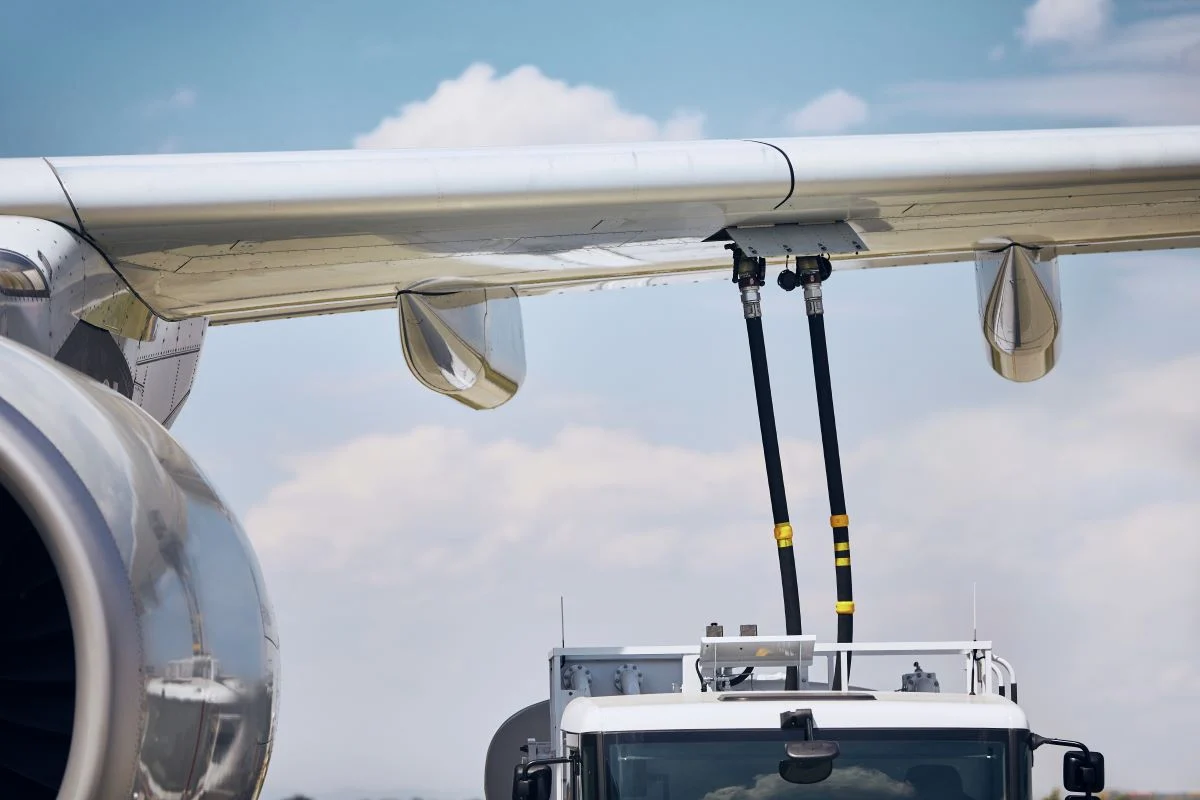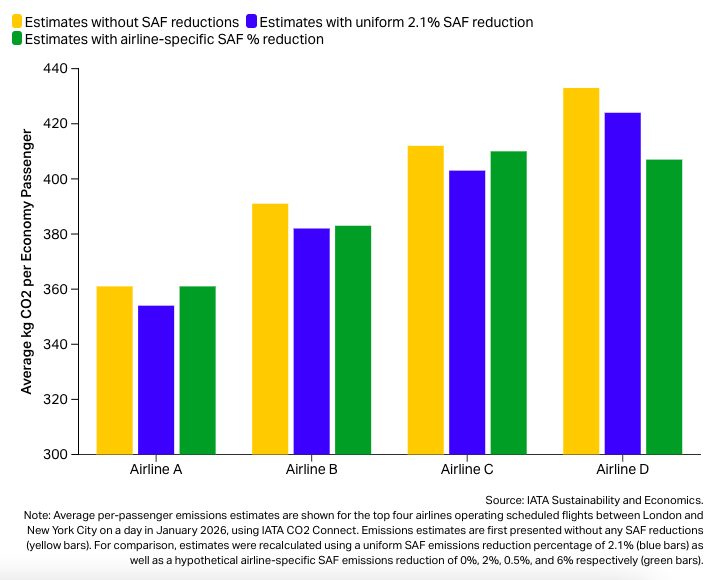Sustainable Aviation Fuel (SAF) is emerging as a key differentiator among airlines in reducing per-passenger flight emissions.
As the aviation sector accelerates its decarbonization efforts, the extent to which each airline uses SAF should determine the environmental performance of its flights, rather than relying on a blanket percentage applied uniformly based on mandated SAF delivery targets.
A regulatory SAF mandate, such as a 3% delivery at a given airport, does not directly translate into a 3% reduction in emissions for each departing flight from that airport. This gap is driven by the following two main factors.
Firstly, the type of SAF i.e., its lifecycle emissions matters. A 3% delivery of SAF with a 70% lifecycle emissions reduction compared to conventional jet fuel would yield about a 2.1% emissions reduction, based on the IATA SAF Accounting and Reporting Methodology.
Impact of including SAF in passenger CO2 calculations
Hover to explore the data
Applying that 2.1% reduction uniformly across all flights departing from a mandated airport would fail to differentiate, and thereby disincentivize, the use of SAF with the greatest available lifecycle emissions reduction.
Secondly, the volume of SAF used by airlines plays a role. SAF delivery to an airport does not mean equal and consistent SAF usage by the airlines. SAF mandates are typically imposed on fuel suppliers, not directly on airlines.
A supplier may deliver overall 3% SAF volume to an airport in a specific year, but the distribution of that SAF and/or its environmental attributes throughout the year, and across airlines flying out of that airport depends on each airline’s contractual agreements. Some airlines may secure a greater share of SAF through their supplier agreements, while others may use none at all.
Fair flight emissions estimates should reflect actual SAF purchases by airlines and rely on calculators powered by airline-specific primary data, such as IATA’s CO2 Connect. This enables meaningful comparisons across airlines and empowers passengers to make climate-conscious decisions as SAF shares in airline fuel supply continue to grow.




